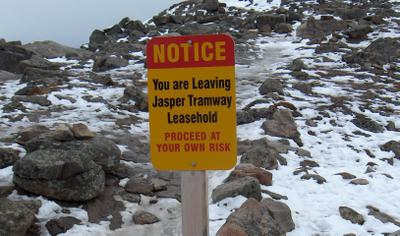Across the Atlantic, things are a bit different. Canada is not as shocking as some parts of the US, since it blends European and American influences; yet also here it’s interesting to watch for differences:
- Trains. Have you ever seen train with 108 wagons, pulled by three locos in a row?
- Warnings. Visiting a park, would you expect hundreds of ”SLOW” signs on the biking roads, whenever a small slope or bend approaches? Not to speak of warning signs at the gondola station up in mountains (”Proceed at Your Own Risk”).
- Cars. Ugly, nasty, environmental-unfriendly boxes on wheels.
- Roads. Four-line highways are standard even for roads up to gondola station in mountains.
- Oil revenues. Alberta province is so rich because of royalties that Prime Minister Klein distributed CAN$ 400 to each citizen of Alberta.
- Refineries. The factories are built on large areas; 10 km sq. is no exception.
- Cities. Most cities were built as on the green field, so have structure of a chessboard, with streets going north-south and avenues east-west. You don’t get lost unless you interchange street and avenue numbers. (You can also get lost when you don’t change the numbers, but become confused and convince yourself that you must have changed street and avenue numbers. This happened to me, Lucka and Kamila.)
- Food. Junk food is real junky. Canadians have it even worse because of socialized health-care, which obviously introduces moral hazard.
- Trails. In mountains, you walk for five-six hours and don’t meet any human. On the other hand, you have a good chance to meet some bear, canibou, deer, beaver, and thousands of squirrels.
- Phone. One-minute call from National Park to Edmonton (400 km) costs CAN$ 2.5. The machine doesn’t return change. Well, the price is like a call from Prague to some deserted places in mid Africa, or into slums in Bangladesh.
- Relieving. You get sophisticated instructions on how to cover and dig your ”droppings” in a national park.
- Highway passage. Below highways, there are passages for animals to trespass. They put sand there to study which animals use the passages and how. People can go through as well, but have reserved a special human path (animals don’t follow it because of smell).
 Proceed at your own risk!
Proceed at your own risk!